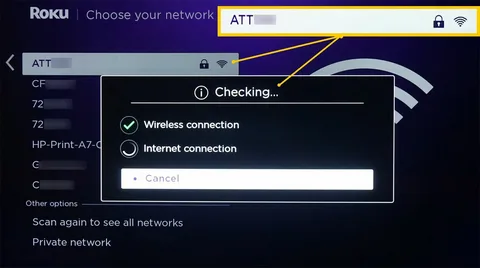As 5G networks continue to roll out globally, many smartphone users are eager to tap into the faster speeds, lower latency, and enhanced connectivity that 5G promises. A common question arises: Can I convert my 4G SIM to a 5G SIM? The answer is not entirely straightforward, as it depends on several factors, including your SIM card, device, and carrier. This article explores the process, requirements, and steps to transition from a 4G SIM to 5G, ensuring you can make an informed decision.
Understanding the Difference Between 4G and 5G SIMs
Before diving into the conversion process, it’s essential to understand what sets a 4G SIM apart from a 5G SIM. A SIM (Subscriber Identity Module) card is a small chip that connects your device to your carrier’s network, storing information like your phone number, carrier details, and network authentication data.
Technically, most modern SIM cards are designed to be backward and forward compatible, meaning a 4G SIM can often work on a 5G network, provided other conditions are met. However, some carriers issue specific 5G SIM cards optimized for their 5G networks, which may support advanced features like standalone (SA) 5G networks or enhanced security protocols.
The key difference lies not in the physical SIM card itself but in how it interacts with your carrier’s network and your device’s hardware. Let’s break down the requirements for accessing a 5G network.
Requirements for Using a 5G Network
To access a 5G network, you need the following:
-
A 5G-Compatible Device: Your smartphone or device must have a 5G modem and support the 5G bands used by your carrier. Most modern smartphones, such as those released after 2020, are 5G-ready, but older devices may only support 4G or 3G.
-
A 5G-Compatible SIM Card: While many 4G SIMs can connect to 5G networks, some carriers require a 5G-specific SIM for optimal performance or to access certain 5G features.
-
A 5G Network Plan: Your carrier must offer a 5G plan, and your account must be subscribed to it. Some carriers automatically include 5G access in their plans, while others may require you to upgrade or opt-in.
-
5G Network Coverage: You must be in an area with 5G coverage. 5G networks are still expanding, and coverage may be limited in rural or less populated areas.
Can You Convert a 4G SIM to 5G?
The term “convert” might be misleading because you don’t physically alter a 4G SIM to make it 5G-compatible. Instead, it’s about ensuring your SIM, device, and plan are aligned to access a 5G network. Here’s a closer look at the process:
1. Check Your Current SIM Card
Many 4G SIM cards, especially those issued in the last few years, are technically capable of connecting to 5G networks. This is because modern SIM cards use universal integrated circuit card (UICC) technology, which supports multiple network types, including 5G. To confirm, contact your carrier or check their website to see if your SIM is 5G-compatible.
2. Verify Device Compatibility
Even if your SIM card supports 5G, your device must also be 5G-ready. Check your phone’s specifications to confirm it supports 5G bands (e.g., Sub-6 GHz or mmWave) used by your carrier. You can find this information in your device’s manual, settings, or manufacturer’s website.
3. Contact Your Carrier
If your SIM card is not 5G-compatible, your carrier may need to issue a new 5G SIM card. This process is usually straightforward:
-
Visit a Carrier Store or Website: Most carriers offer free or low-cost SIM card upgrades. You can order a new SIM online or visit a local store.
-
Activate the New SIM: Once you receive the 5G SIM, follow your carrier’s instructions to activate it. This may involve transferring your phone number and plan to the new SIM.
-
Confirm 5G Plan: Ensure your plan includes 5G access. Some carriers may require you to upgrade your plan or add a 5G feature.
4. Test Your 5G Connection
After confirming your device, SIM, and plan are 5G-ready, test your connection in an area with 5G coverage. Look for the 5G icon in your phone’s status bar or check your network settings to verify you’re connected to a 5G network.
Do You Always Need a New SIM for 5G?
Not necessarily. Many users can access 5G networks with their existing 4G SIM, especially if the SIM is relatively new and the carrier supports it. For example:
-
In the United States, carriers like T-Mobile, AT&T, and Verizon often allow 4G SIMs to connect to 5G networks if the device and plan are compatible.
-
In countries like India, carriers like Airtel and Jio may require a 5G SIM for certain plans or to access standalone 5G networks.
If your carrier requires a 5G SIM, they’ll typically provide one at no extra cost or for a nominal fee. Always check with your carrier to avoid unnecessary upgrades.
Benefits of Upgrading to a 5G SIM
While a 4G SIM may work on a 5G network, upgrading to a 5G SIM (if required) can offer several benefits:
-
Optimized Performance: 5G SIMs are designed to handle the advanced features of 5G, such as ultra-low latency and network slicing.
-
Future-Proofing: A 5G SIM ensures compatibility with future network upgrades, including standalone 5G networks.
-
Enhanced Security: Newer SIMs may include improved encryption and authentication protocols for better security.
Common Challenges and Solutions
-
No 5G Signal: If you don’t see a 5G signal, verify you’re in a 5G coverage area. You can check your carrier’s coverage map online.
-
Incompatible Device: If your phone doesn’t support 5G, upgrading your SIM won’t help. Consider upgrading to a 5G-compatible device.
-
Plan Restrictions: Some carriers restrict 5G access to specific plans. Contact your carrier to confirm your plan includes 5G.
-
Activation Issues: If your new 5G SIM doesn’t work, double-check the activation process or contact customer support.
Conclusion
Converting a 4G SIM to 5G isn’t about physically modifying the SIM but ensuring your SIM card, device, and plan are compatible with a 5G network. In many cases, your existing 4G SIM will work fine, but some carriers may require a 5G SIM for optimal performance. By checking your device compatibility, contacting your carrier, and confirming 5G coverage, you can seamlessly transition to a 5G network and enjoy faster speeds and better connectivity.
If you’re unsure about your SIM or plan, reach out to your carrier for guidance. With 5G becoming the new standard, making the switch is easier than ever, and it’s a step toward unlocking the full potential of next-generation mobile networks.


